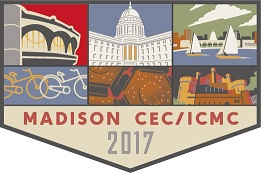Speaker
Description
Iron-based superconductors have attracted a great deal of interests in both fundamental physics and potential applications. We have grown iron-chalcogenide FeSe0.5Te0.5 (FST) superconducting films on various single crystal substrates and metal substrates in coated conductors by pulsed laser deposition.[1] The FST films on CeO2 buffer layer exhibit enhanced transition temperature Tc (onset Tc = 20 K, zero resistance Tc = 18 K), which is about 30% higher than that found in the bulk materials, and carry high critical current density Jc more than 1 MA/cm2 in self-field and 0.1 MA/cm2 under 35 T at 4.2 K.[2] In this talk, we present a route for simultaneous increase of Tc and Jc in FST films by low-energy proton irradiation.[3]
A robust enhancement of Tc and Jc has been realized simultaneously in the FST film irradiated with 190 keV proton, resulting in an increase of zero resistance Tc from 18.0 K to 18.5 K and an increase of Jc at 12 K by one order of magnitude after the irradiation at applied magnetic field over 15 T for H//ab and over 6 T for H//c. Extensive transmission electron microscopy analysis provides direct atomic-scale imaging of cascade defects and the surrounding nanoscale strain field produced by low-energy proton irradiation. Our studies opened up the possibility to achieve significant enhancement of Jc without Tc reduction through the design of vortex pinning landscape by low-energy ion irradiation for superconducting films.
1) Q. Li et al., Rep. Prog. Phys. 74, 124510 (2011).
2) W. Si et al., Nat. Commun. 4, 1347 (2013).
3) T. Ozaki et al., Nat. Commun. 7, 13036 (2016).
